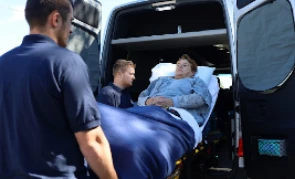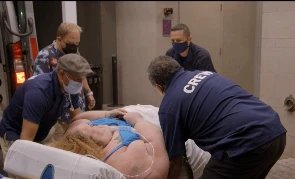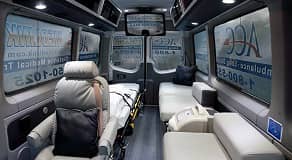Access to medical care is a major challenge patients face daily. This limitation is usually because of transportation barriers to and from a hospital. An ideal solution to arrest this problem would be the use of non-emergency medical transport.
Non-Emergency Medical Transport provides patients with less critical conditions transportation services. For example, if a loved one needs to visit the hospital for a medical examination – non-emergency transport caters for that.
While in transit, non-emergency medical transport avails patients of basic medical care such as chest compression procedures, access to ventilators, and other basic support services.
Although the core aim of non-emergency medical transport is to eliminate transportation barriers, here are other reasons patients need the transport system;
Patients with physical or mental constraints are not fit to drive themselves to the hospital. This is because they risk their health and might not safely get to their destination.
Also, people with no valid driver’s license cannot transport their loved ones or themselves to the hospital, as this is unlawful.
Additionally, people with no personal vehicle are also likely to miss medical appointments. Therefore, patients can leverage non-emergency medical transport to improve access to medical care.
The non-emergency medical transport works seamlessly. Patients can book their transport via a website or a phone number. Moreover, the transport system is saddled with the responsibility of conveying them to and from their preferred destination. And regardless of where they are transiting to, they get access to special care on board.
There are many examples of how non-emergency medical transport plays a significant role in the healthcare industry;
Ambulatory surgery, also known as outpatient surgery, is an excellent example to describe this role. Here, a patient gets discharged the same day they had surgery. Hence, there’s a need for non-emergency transport to convey them back to their home.
Another suitable example is postoperative appointments. This appointment is for patients recovering from a surgical procedure. Here, the doctor schedules an appointment covering examination of wounds, removal of staples, and other special care for the patient. Considering that the patient cannot transit themselves to and from such appointments – non-emergency medical transport comes in handy.
Non-emergency medical transport is a vital service that is critical to tackling transportation issues faced by patients. Patients with no life-threatening conditions can use the services to transit themselves to and from the hospital; both safely and conveniently.

When choosing a medical transport service provider, you must ensure to choose one that not only focuses on getting you to your destination, but also prioritizes using the safest, most conducive, and most efficient sets of vehicle fleets and equipment to do the job.

ACC Medlink appeared on the TLC television network reality show “1000 LB Sisters” to transport one of the cast members from Ohio to a doctor in Kentucky. ACC Medlink, four of its employees, and the journey they took with Tammy Slaton were featured in episode 6 of season 4.

ACC Medlink is proud to announce the addition of a new line of elite medical sprinter vans to our long distance medical transport fleet. This addition will allow ACC Medlink to continue to provide superior service and outstanding care for those in need of medical transport out of state...
